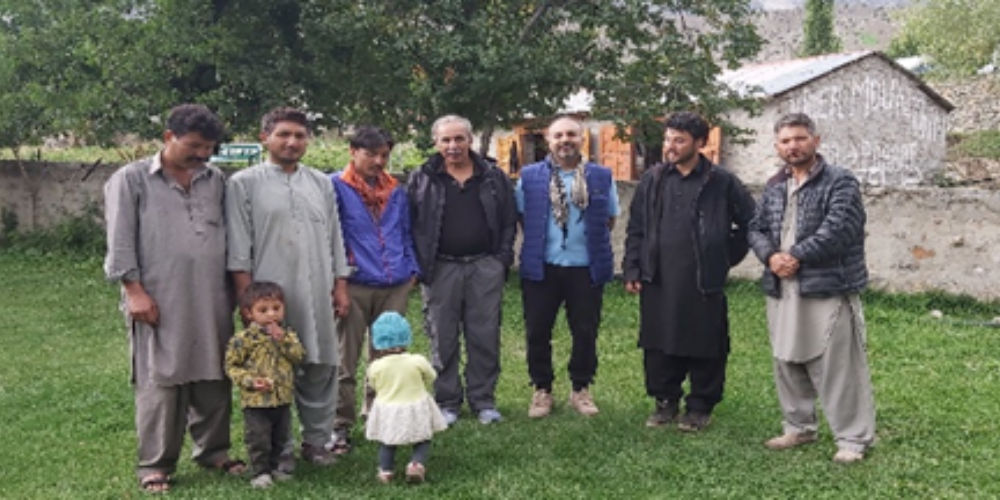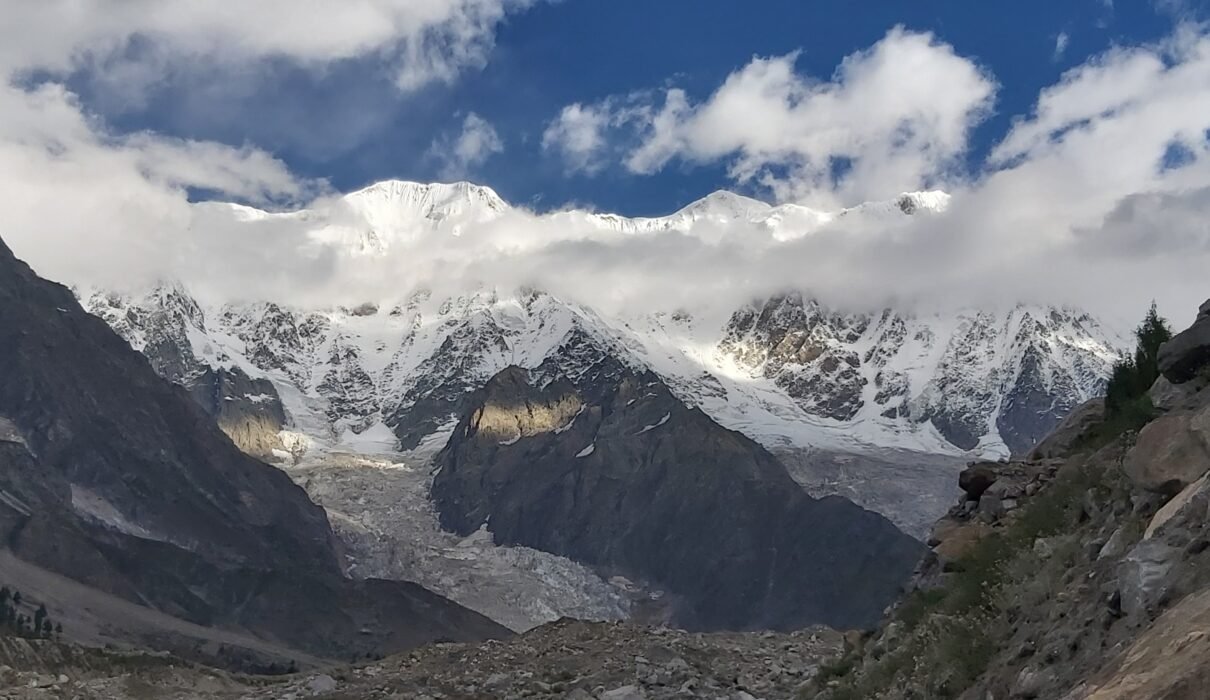The trek is set in the picturesque Astore Valley of Gilgit Batistan. Astore can be approached round the year by road along the Karakoram Highway. It takes about 10 hours to reach Astore from Islamabad via Babusar Pass during the summers. Its 40 odd kilometres approach road runs through a seismically vulnerable land slide prone area. It is about 2.5-hour drive from Gilgit and another route links it to Skardu via Deosai Plateau during the summers.

Nanga Parbat at sunrise
Straddling Astore and Diamir districts, Nanga Parbat stands at a massive 26,600 feet or 8126 meters above the sea level. It is the eight highest peak in the world and the western most massif of the Himalayas. It is approached along the Rupal face in Astore, from Diamir and Raikot on the Chilas side.

The glacier fed Rama Lake is nestled along the peaks extending from Nanga Parbat. Located at about 11500 feet, it is at a three kilometres trek from the picturesque PTDC Astore Rest House set along an elevated green meadow. The famous Deosai plateau lies towards the east, and it extends till the Satpara lake in Skardu. Deosai is a riot of striking colours during the late summers. However, the increasing human ingress in the Plateau poses a threat to its rare flora and fauna. In short Astore is a traveller’s haven during the summers and it presents challenging treks even during the winters.

Rama Lake Astore
t was in the summer of 2013 that I travelled to Rattu and onwards to my Army unit deployed across the Burzil Pass. Close to Rattu, I visited Tarashing village at about 9500 feet located at the
mouth of Rupal Valley. There I met Abbas Ali a young friendly man sitting next to his hotel, Rupal Hotel Nanga Parbat. He comes from a family of mountaineering tour guides. He invited me to a trek up to the Herrligkoffer Base (also referred to as the Polish Base). It is one of the jump-off points for the Nanga Parbat climb.
I did the trek during the holy month of Ramzan. With an overnight at Abbas’ hotel, we kicked off half an hour after the ‘sehr’ meal. From Tarashing on a clear morning one can see the Nanga Parbat Top, its Raikot face and the Chongra Peak.
We crossed a glacier to enter the extended green Rupal valley. Its communities engage in subsistence agriculture and animal husbandry. Wheat, barley, and potatoes are sown as a cash crop. The sparse tree population includes pine, juniper, and eucalyptus. Rupal Valley houses relatively affluent communities closer to Tarashing and marginal habitations as you travel towards the Nanga Parbat.

Rupal Village in the background
The trek traverses a gradual rise along the Rupal Valley. You come across a school built by Reinhold Messner, the famous mountaineer. Couple of inclines and you enter the Herrligkoffer Base after about three hours. Here Nanga Parbat sits right in front in its awe-inspiring beauty. The Base is an open and a well-watered meadow. We climbed across the Base’s shoulder to access another glacier. Our trek finished at that point. While fasting I dehydrated on the way back. Sun is unrelenting with its ultraviolet rays at such heights.

Herrligkoffer Base Nanga Parbat
I have trekked the same route three more times and the last one was in 2020 with a friend. I may go yet again. It is the sheer thrill of seeing Nanga Parbat from so close that brings you back. But one must plan the trek very early in the morning before clouds cover the mountain. Twice all we got was its fleeting glimpses. On one occasion we heard very loud rumblings and blasts to realise that an avalanche had triggered along the Mountain’s upper reaches. I was told that a Korean couple had travelled twice to see Nanga Parbat from close but failed due to cloud cover. I met a handicapped British lady with a guide on a rented jeep who aspired to go as close to the mountain as possible.
A varied audience reaches these bases and beyond to see the awe inspiring ‘killer mountain’ from close. As per Abbas the domestic adventure tourism in the region has also picked up, especially by ladies.
Astore Valley offers numerous trekking / adventure tourism opportunities. The same trek can be extended around Nanga Parbat via Mazeno Pass to reach the Fairy Meadows. You can trek from Tarashing to Rama Meadows. Another trekking route goes along the Shontar Nullah via Shontar Pass to Kel in AJK. There are trekking options astride the Deosai Plains. Across Burzil Pass one can
trek from Kamri to Kel via Taobat. However, this a limited access area and one must coordinate with the relevant authorities. There is much to see and experience in the Astore and the adjoining Diamir region.

With our guide Abbas and his family at his hotel in Tarashing
Much has improved in terms of touristic facilities in Astore over the years. Road till Tarashing is now metalled, and it takes about 30 minutes to drive from Astor City. Abbas’ hotel is redone with eight new rooms. He can be contacted on 0343-5352646 or at abbas.astori14@gmail.com. A new and relatively comfortable hotel has come up in the outskirts of Astor City by the name of Wazir Mahal Hotel. Astore thus offers numerous venues for promoting eco-tourism. Saved of the downsides of commercial tourism, one can experience nature in its pristine best. So, wish you enjoyable tours and treks.
Summary:
| Access | Logistics | Treks | Safety | Cost | Aesthetics |
| Accessible by road till Tarashing | Lodging, food and portering can be facilitated | Moderate to difficult depending on the fitness level | Safe. Guide is recommended. | If one is not camping at the Base, you only pay for the guide: Rs 7000 to | Pleasing |


